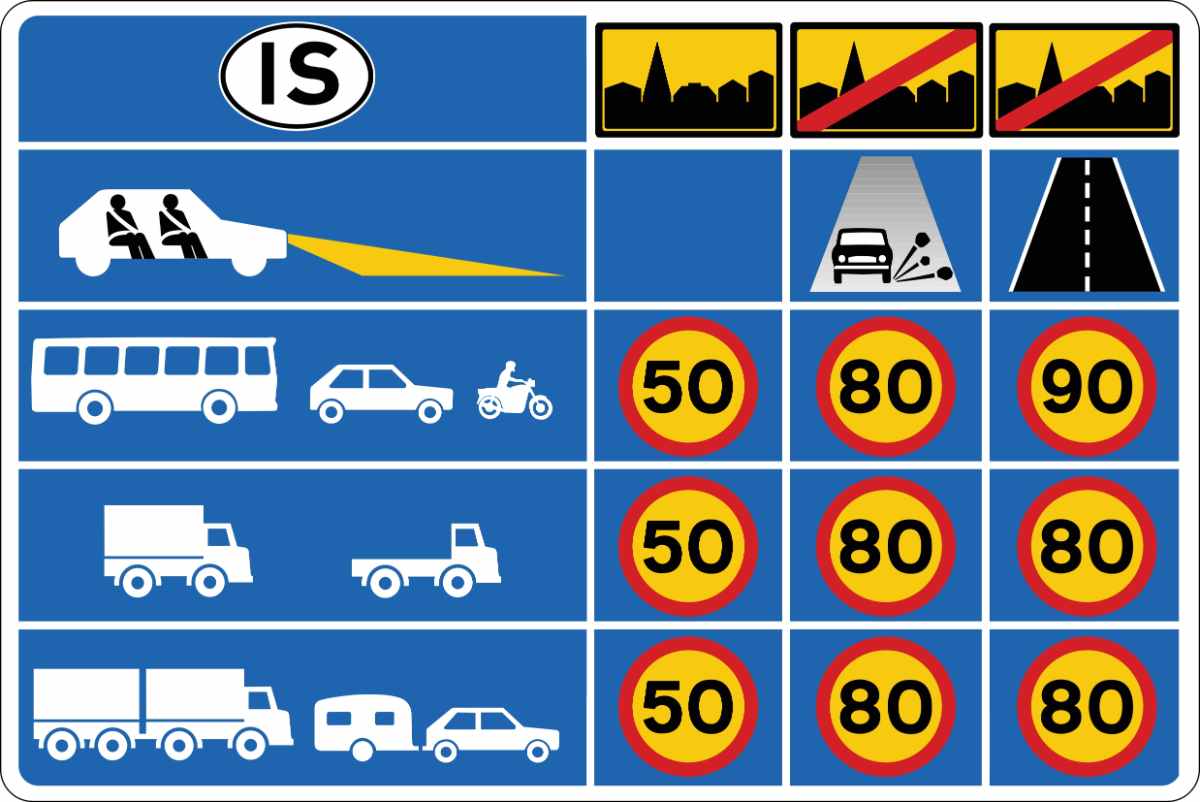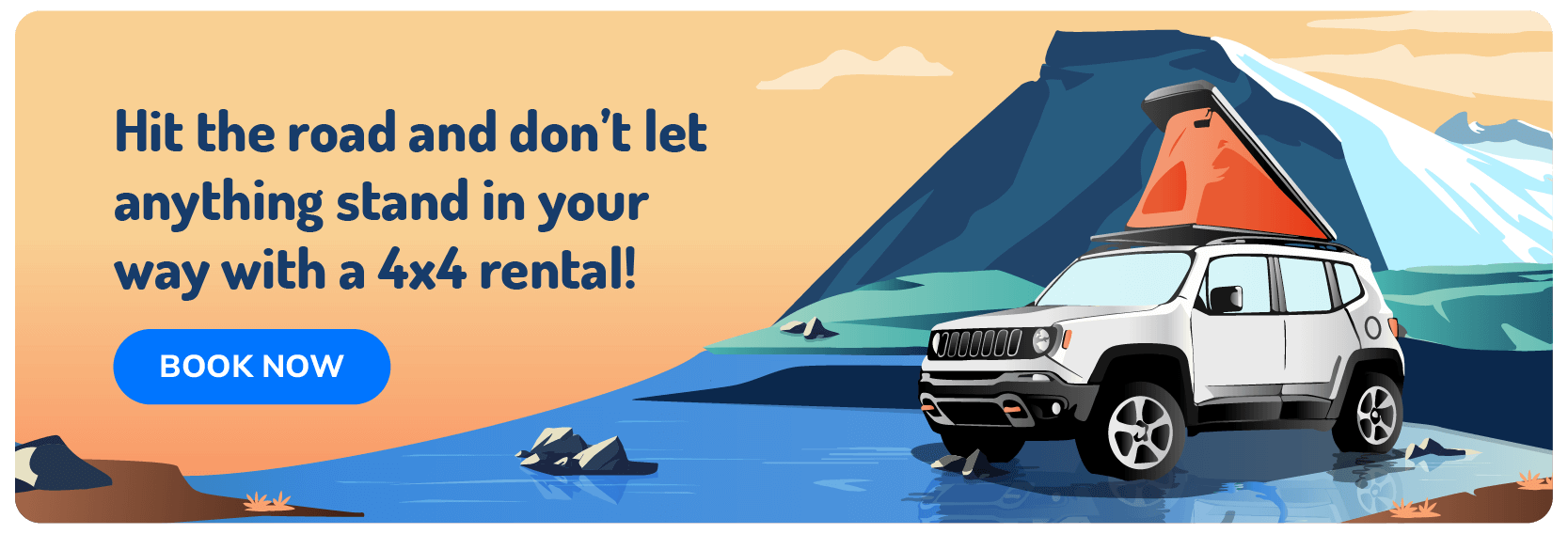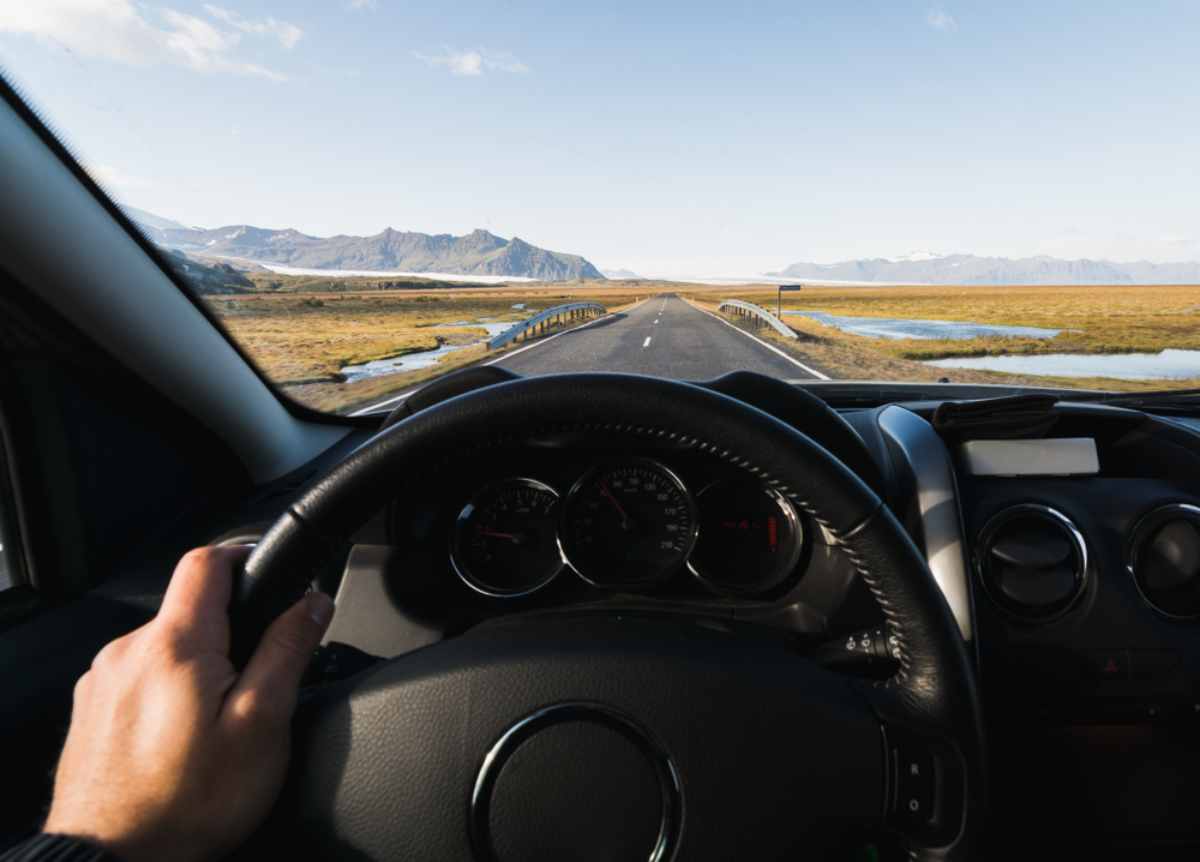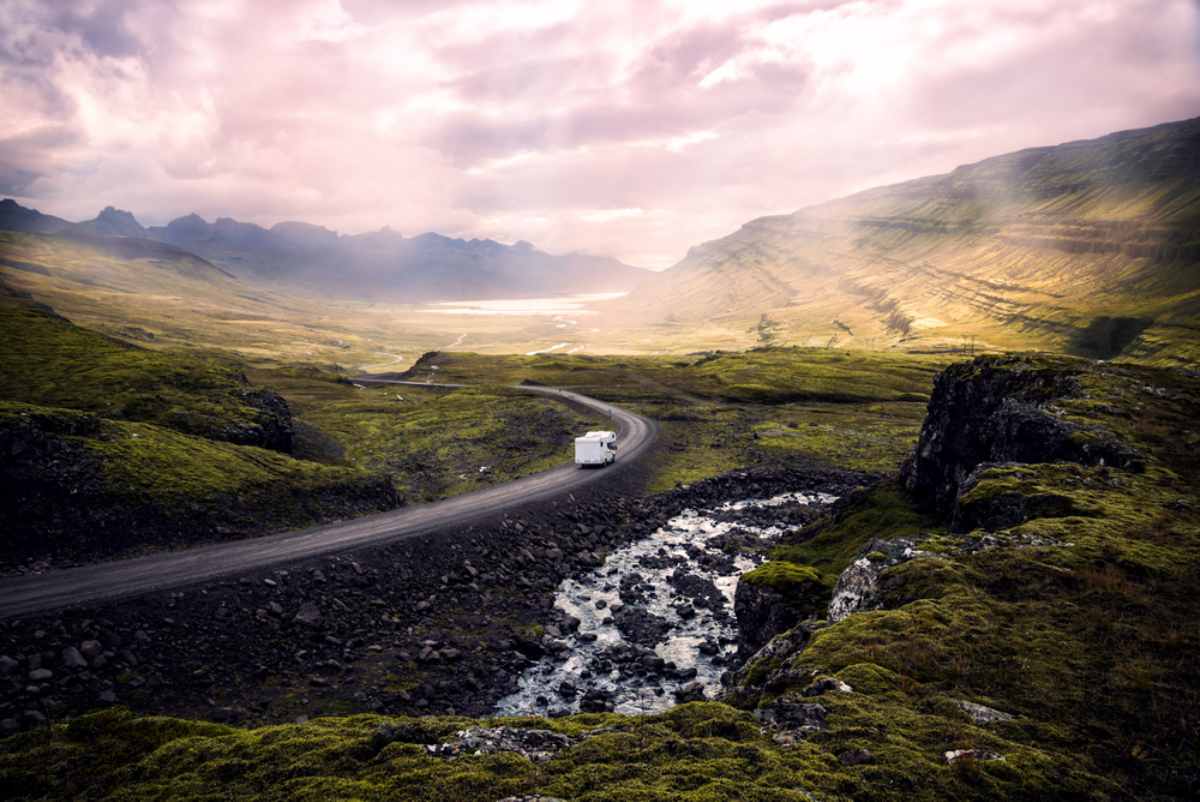Nothing ruins an Iceland road trip faster than a flashing speed camera and a fine that could pay for another vacation. You might think, 'I'm a careful driver. What's the worst that could happen?' Well, in Iceland, the speed limit changes often, gravel roads turn into ice rinks, and those friendly looking speed signs aren't just suggestions.
The police and automated cameras don't play around, and rental companies will happily pass the bill to you. But don't worry, we've got you covered. This guide will break down Iceland's speed limit rules, sneaky fines, and road hazards so you can drive smart and stress-free.
General Speed Limits in Iceland
Iceland isn't the place to test how fast your motorhome rental can go before it shakes apart. The speed limit in Iceland is strictly enforced, and trust us; those fines hurt more than the cold wind slapping your face. Here's what you need to know before hitting the road.
- 50 km/h (31 mph) in urban areas. Pedestrians have the right of way, and speed cameras are always watching.
- 80 km/h (50 mph) on gravel roads. Loose stones, blind hills, and unexpected sheep crossings make this more of a maximum suggestion than a challenge.
- 90 km/h (56 mph) on paved rural roads. This is the general speed limit, and no road allows you to legally go faster.
Some areas might have limits up to 100 km/h (62 mph) if conditions are safe, but don't expect a racetrack. Major highways near cities sometimes allow 60–80 km/h (37–50 mph), but that's only where pedestrians won't be wandering into your path. Residential areas often have 30 km/h (19 mph) limits, and locals will glare at you if you speed past their homes.

Speed Limits on Iceland's Most Popular Routes
Now that you know the general speed limit rules, let's talk about the roads you'll actually be driving on. If you're visiting Iceland, you'll probably tackle at least one of these famous routes, each with its own speed regulations.
- Ring Road: 90 km/h (56 mph), but don't get too comfortable. A gravel stretch on the east coast demands extra caution.
- Golden Circle: 90 km/h (56 mph), but tourist traffic means you'll rarely hit that speed.
- Arctic Coast Way: 80 km/h (50 mph) on gravel and 90 km/h (56 mph) on paved roads. Expect winding roads and unpredictable conditions.
- South Coast Way: 90 km/h (56 mph), but wind, rain, and sudden stops for waterfalls mean slowing down is inevitable.
- Westfjords: 80–90 km/h (50–56 mph), depending on whether you're on gravel or paved roads. With sharp curves and sheer drops, reckless driving isn't an option.
Speed Limit Enforcement in Iceland – Break the Rules, Pay the Price
Think you can get away with a little extra speed? Think again. Iceland doesn't play when it comes to speed enforcement, and if you don't stick to the speed limit, your wallet is going to feel the pain. Speed cameras are everywhere, even in remote areas, and police patrols are always on the lookout. Some roads even have digital signs that flash a smiley face if you're obeying the rules, but if you're not, expect a hefty fine.

Speeding Fines in Iceland
|
Violation |
Fine(USD) |
|
26 km/h over in a 30–35 km/h zone |
$195 |
|
36 km/h over in a 50–60 km/h zone |
$300–$390 |
|
41 km/h over in a 70 km/h zone |
$460 |
|
41 km/h over in an 80–90 km/h zone |
$615–$690 |
What Happens If You Get a Speeding Ticket?
Break the Iceland speed limit, and you won't just get a slap on the wrist. And if you think you can dodge the consequences, think again. Here is what happens if you get a speeding ticket in Iceland:
Receiving the Ticket
- Caught by a speed camera? The ticket goes straight to the rental company.
- The rental company hands over your details to the police.
- Expect an email or a lovely surprise in your mailbox when you get home.
Payment Process
- Rental companies will add a handling fee of $35–$70 on top of the fine.
- Pay immediately, and you might get a 25% discount.
- Payment methods include bank transfer, online payment, or in-person at a Sýsluskrifstofa.
- Police can issue on-the-spot fines, and yes, you can pay with a credit card.
Consequences of Non-Payment
- Unpaid fines may end up with collection agencies.
- Future car rentals in Iceland could be a problem.
- Iceland might not chase you internationally, but is it worth the risk?
Advice for Tourists
- Check your rental agreement. Some companies charge your credit card automatically.
- Play it safe. Stick to the Iceland speed limit, or be ready to pay the price.

Safety Tips for Driving in Iceland
Driving safely in Iceland is not just about obeying the Iceland speed limit. It's about being prepared. Before hitting the road, download Google Maps, Waze, or the SafeTravel app to stay updated on road conditions, closures, and speed limits.
Also, make use of Umferdin.is to get real-time road condition information so you can plan your trip better. Make sure you have a paper map as a backup in case you lose internet connection or battery, especially if you're exploring the remote areas of Iceland.
Always check the weather forecast before driving. Iceland's roads can change fast, and sites like Vedur.is provide real-time updates on storms and wind conditions. If you're renting a camper in Iceland, make sure it's suited for where you're going.
Special Road & Weather Considerations
Iceland's natural wonders are worth the trip, but getting there is another story. Gravel roads in rural areas can turn into slippery traps, especially in winter. If you make one wrong move, you'll be sliding like a penguin on ice. If you're transitioning from pavement to gravel, don't floor it. The change is abrupt, and your tires will remind you who's in charge.
Blind hills, or 'blindhæðir,' can make you feel like you're in a real-life guessing game. Slow down before cresting one unless you enjoy surprises. Single-lane bridges are another fun challenge. The car closest gets to cross first, so take a second to assess instead of playing chicken.
Iceland's weather is as unpredictable as it gets. Strong winds, sudden snowstorms, and icy roads can turn a smooth drive into a white-knuckle experience. F-roads leading to the highlands are open only in summer, and without a 4x4, you're not getting far.

Basic Icelandic Driving Laws to Keep in Mind
Driving here isn't just about sticking to the speed limit in Iceland. There are strict laws you need to follow unless you want to deal with fines or worse. Seat belts are mandatory for everyone in the vehicle, with no exceptions.
Headlights must be on at all times whilst driving, even during the endless daylight of summer. Using a mobile phone while driving is illegal unless you have a hands-free system. Iceland enforces a zero-tolerance policy on driving under the influence, with one of the lowest legal alcohol limits in the world. Even one drink could land you in serious trouble.
Off-road driving is strictly forbidden to protect Iceland's fragile nature. If you leave designated roads, expect a massive fine. Roundabouts can be confusing, but the inner lane always has the right of way. Know the rules, follow them, and enjoy the drive without the stress of unexpected penalties.
What Vehicles Do We Recommend? Choose Wrong and Regret It
Not all cars can handle Iceland's roads, and picking the wrong one could turn your dream trip into a nightmare. If you are sticking to the Ring Road, a regular rental car or a campervan will do the job. Just remember that a campervan gives you more freedom, saves money on accommodations, and lets you chase the northern lights from your own bed.
Planning to hit the F-roads? You need a 4x4. No exceptions. These rugged highland roads are filled with rough terrain, river crossings, and unpredictable conditions that will wreck a small car in minutes.
Winter driving? Get a vehicle with studded tires and take it slow unless you enjoy skidding into a ditch. If you want a hassle-free road trip, check out our selection of campervan rentals and 4x4 rentals. The right vehicle makes all the difference when tackling Iceland's wild landscapes.

FAQs About Iceland's Speed Limits
How strict are Iceland's speed limits?
Iceland strictly enforces speed limits with speed cameras and police patrols. Fines are high, and rental companies will charge you directly, so sticking to the limit is essential.
What is the speed limit on Road 1 in Iceland?
The speed limit on Road 1 (Ring Road) is 90 km/h (56 mph) on paved sections and 80 km/h (50 mph) on gravel. Conditions vary, so driving cautiously is always recommended.
Why is the speed limit so slow in Iceland?
Iceland's unpredictable weather, sharp turns, gravel roads, and single-lane bridges make higher speeds dangerous. Strict limits help protect drivers, wildlife, and the country's fragile landscape from unnecessary damage.
What is the speed limit on F-roads in Iceland?
The official speed limit on F-roads is 80 km/h (50 mph), but rough terrain, river crossings, and unpredictable conditions often mean you'll be crawling along at 30 km/h (19 mph) instead.
What happens if you get caught speeding in Iceland?
If pulled over, you can pay the fine immediately with a credit card and get a 25% discount. Otherwise, the ticket is sent to your rental company, adding extra fees.
Break the Iceland Speed Limit, and Your WALLET Will Suffer
Ignoring the Iceland speed limit isn't just risky. It's expensive. Speed cameras, police patrols, and unpredictable roads mean one wrong move can lead to a massive fine or a dangerous accident. Sticking to the limits isn't just about avoiding penalties. It's about protecting
Iceland's fragile landscapes and keeping yourself safe on roads that change in an instant.
If you want the best way to explore our country at your own pace, rent a campervan in Iceland and take in the scenery responsibly. Reach out to us today at Motorhome Iceland for expert advice and a smooth, stress-free road trip.


